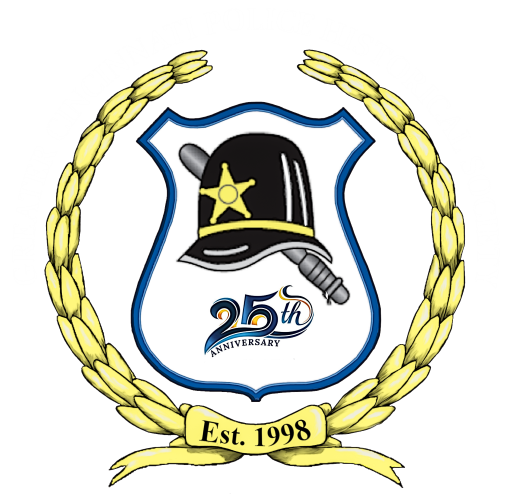
Badge: 1303
Age: 40
Served: 11 years
1979 to September 25, 1990
MURDERER
John Bundy had a history of violence and had been under medical care for mental illness after a suicide attempt in 1983. In that attempt, Bundy blew off half of his face and lost his left eye. He was committed to Veterans Administration Hospitals – though he was not a veteran – in Cincinnati and Chillicothe. He was diagnosed as having schizophrenia, paranoid type; a mental disorder characterized by delusions, hallucinations such as hearing voices, unfocused anxiety, anger, tendency to argue, and violence.
During 1989, one doctor wrote in his record that he was “remarkably dangerous” based on statements Bundy made with regard to his family.
During January 1990, Ted Bundy, his brother, tried to persuade the Veterans Affairs Medical Center at Chillicothe not to release John to a halfway house. On February 1, 1990, they released him. That month, he bought a .38-caliber revolver in a Chillicothe, Ohio discount store.
Barbara, Bundy’s wife, divorced him soon after his suicide attempt.
OFFICER
Later, Barbara met Robert Palmer. He had joined the Elsmere Police Department about 1979 and was later promoted to Sergeant.
Barbara married Sergeant Palmer and by 1990 they had had two children together, Casey Palmer (4) and Robyn Palmer (3). About March 1990, they moved into a mobile home at 158 Seneca Trail in Elsmere, Kentucky.
INCIDENT
On Labor Day, September 3, 1990, shortly before noon, Bundy drove to the Palmers’ home, got out of his maroon Dodge Charger piled high with clothes and other belongings, walked toward the front door passing Casey who was playing in the front yard, and into the home carrying the .38 caliber revolver. He shot Robyn in the back and right calf; then turned and fired through the front door striking Casey in the chest; and then engaged Sergeant Preston who was in the bedroom with his 9mm semiautomatic pistol. In the ensuing firefight, Bundy was hit seven times in the neck, chest, abdomen, and left arm and Sergeant Palmer twice, in the chest and right upper leg. Mrs. Palmer was not injured.
Neighbors called the police. By the time they arrived, Bundy and Casey were dead. Sergeant Palmer was in life-threatening condition with a collapsed lung. Robyn was dying in her mother’s arms in the front yard.
University of Cincinnati Air Care responded and administered to Robyn for an hour before she also died.
Sergeant Palmer was rushed to the University of Cincinnati Medical Center with gunshot wounds to his chest and upper right leg. During surgery, physicians removed a portion of his right lung and had to re-inflate the other which had partially collapsed.
The bodies of Bundy, Robyn, and Casey were transported to the Hamilton County, Ohio Morgue for autopsies.
DEATH
Sergeant Palmer’s lungs deteriorated over the next three weeks and his kidneys were beginning to fail. Doctors decided to try an experimental artificial lung (intravascular oxygenator) implant at the Pennsylvania State University’s Milton S. Hershey Medical Center. On September 23, 1990, he became the tenth person to receive the implant. However, on the night of September 25, 1990, he passed away.
He was survived by his wife. His funeral was held at St. Henry Church, 3813 Dixie Highway. He was buried in Highland Cemetery in Ft. Mitchell.
EPILOGUE
Mrs. Palmer sued the Veterans Administration and in 1995 was awarded a $2.75 Million judgment. She died in 2004, 14 years after the murders, and was buried with her husband and children.
If you know of any information, archives, artifacts, or images regarding this officer or incident, please contact the Greater Cincinnati Police Museum at Memorial@Police-Museum.org.
© This narrative was further researched and revised on August 25, 2012 by Cincinnati Police Lietuenant Stephen R. Kramer (Retired), Greater Cincinnati Police Historical Society President. All rights are reserved to him and the Greater Cincinnati Police Museum.


